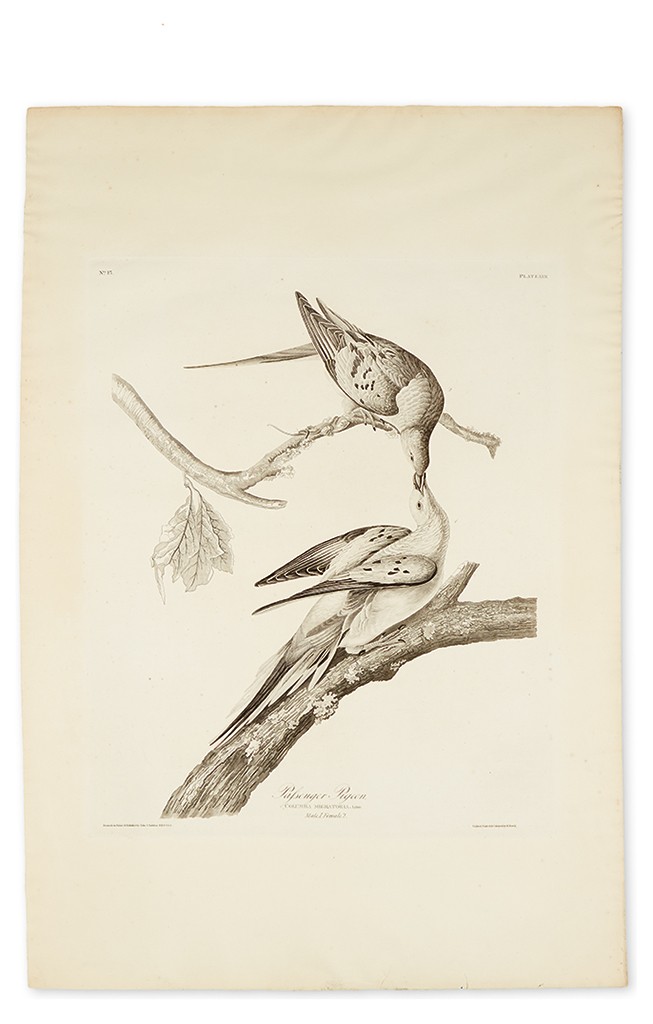Some historical artifacts are so familiar we forget they haven’t always been the way we think of them. Such is the case with two prints in our December 8 sale of Maps & Atlases, Natural History & Color Plate Books. The illustrations in John James Audubon’s Birds of America are still used for reference today as a vibrant and faithful reproduction of species. But what about the history of the plates themselves?

Lot 293: John James Audubon, Passenger Pigeon, Plate LXII, uncolored aquatint and engraved plate, London, 1829. Estimate $8,000 to $12,000.
The Passenger Pigeon is one of the most famous plates from Birds of America. Perhaps it will look more familar like this:

John James Audubon, Passenger Pigeon.
Courtesy Audubon.
The plate from the upcoming auction is an extremely unusual uncolored version of the famous Passenger Pigeon plate. Never colored, cut, or bound, this elephant plate is a rare glimpse into the process of producing Birds of America.
Specialist Caleb Kiffer says he doesn’t know why these two plates, which came from the same collection, were left uncolored. The few uncolored plates that have survived the years usually have printers’ notes correcting the direction of the feathers or number of toes, but these are pristine.
The passenger pigeon, once a thriving North American species, is now extinct.

Lot 294: John James Audubon, Three-Toed Woodpecker, Plate CXXXII, uncolored aquatint and engraved plate, London, 1832. Estimate $3,000 to $5,000.
The second uncolored Audubon plate in the sale is Three-Toed Woodpecker. In this example, it’s possible to see the uneven deckle edges of the huge folio page. Normally these edges would be trimmed as part of the binding process. Here is the same image in color:

John James Audubon, Three-Toed Woodpecker.
Courtesy Audubon.
The three-toed woodpecker is alive and well, living primarily in the tallest trees in the Northeastern United States, especially in Maine.
Audubon’s birds (and mammals) have remained an important part of art historical and scientific history because of their vibrant colors, faithful reproduction and the sheer scale of the project. Birds of America is considered the paragon of wildlife illustration. Part of its appeal was that the specimens were shown engaging in their natural activities, giving the resultant images an immersive, realistic feeling. Look at the drama from The Mocking Bird, also in the sale.

Lot 292: John James Audubon, The Mocking Bird, Plate 21 (Variant 1), hand-colored aquatint and engraved plate, London, 1827. Estimate $7,000 to $10,000.
For prints by Audubon and others, visit the full catalogue.
The post Audubon’s Birds Have a History of Their Own appeared first on Swann Galleries News.